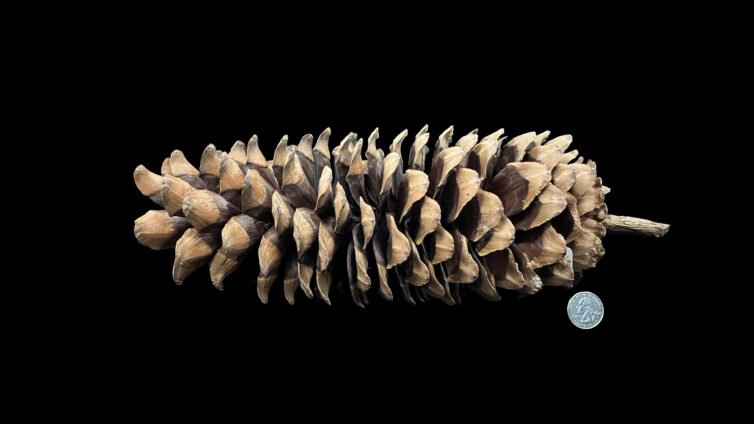
This pinecone comes from the sugar pine, also known as the great sugar pine. It is “one of the largest species of pine, commonly growing to mature heights of 130 to 200 feet tall, exceptionally up to 270 feet… The tallest specimen ever recorded is called the ‘Tioga Tower,’ a 273.74-foot monster in Yosemite National Park” (American Conifer Society, n.d.).
It is in the white pine family, so their needles are grown in bundles of five. The sugar pines’ cones are among the largest measured—up to 26 inches long, with the average cone measuring 10-20 inches long. Their edible seeds are about half an inch long and have a long wing that aids wind dispersal.
“This species is native to the mountains of Oregon and California in the western United States, as well as Baja California in northwestern Mexico; specifically the Cascade Range, Sierra Nevada, Coast Ranges, and Sierra San Pedro Martir” (American Conifer Society, n.d.).
Reflection question:
“Native Americans used the sugar pine’s large, nutritious seeds for food and its sweet sap as a treat. It was also used as a remedy to treat stomach gas, loosen the bowels, or—mixed with milk—as drops for sore eyes” (Oregon Encyclopedia, n.d.). Would you try its sap as a treat?
References:
Pinus lambertiana / sugar pine | Conifer Species | American Conifer Society. (n.d.). American Conifer Society. https://conifersociety.org/conifers/pinus-lambertiana/
Sugar pine. (n.d.). https://www.oregonencyclopedia.org/articles/sugar_pine/#.ZD2GD3ZKi5c
